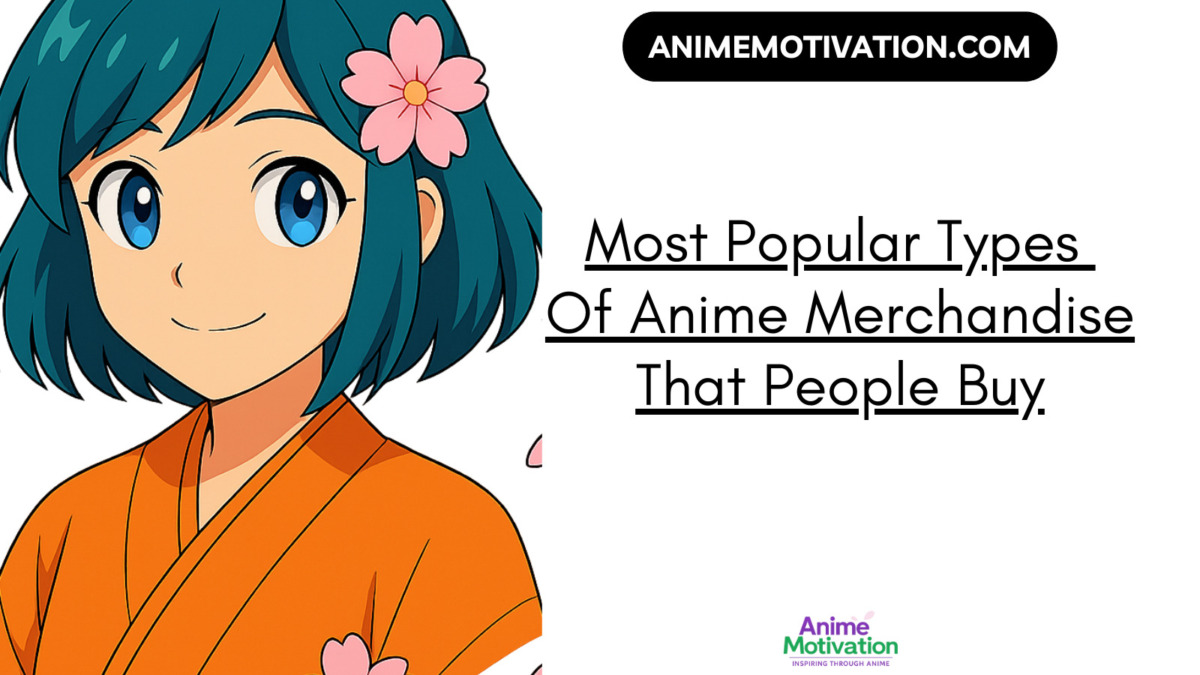With KissAnime gone, piracy is an ongoing conversation.
What’s funny is the anime industry makes almost $20 billion dollars per year in spite of it. Which makes you question the so called “problems” piracy brings to the industry.
How is that even possible?
If piracy went away, would that figure double or triple or quadruple? That’s an answer for another day.
Let’s talk about how the anime industry:
- Makes
money - Brings in profit
- Sustains itself
And still manages to grow, regardless of problems like piracy, animators being overworked and so on.
How The Anime Industry Makes Money :
1. Lots and lots of licensing

The
Anime is different to
This is comparable to:
- Films
- TV Shows
- Documentaries
And intellectual property in general.
The best way to make a point is with:
- Naruto
- DBZ
- One Piece
- My Hero Academia
Anime shows like these is what the industry needs, since anime is a long term investment type of business. Just like stocks and shares.
The reason why you see these anime on legal
- The demand is ongoing
- They’re world famous
- Mainstream
And of course – it allows studios and owners to consistently make millions of dollars.
Those “millions” are accumulated by reselling the licenses to:
- Crunchyroll
- Funimation
And any company that wants the rights to distribute and stream these famous anime shows.
That’s why they continue to be the bread makers of the anime industry.

Outside of famous titles that have “paid their dues” and have paid off in the long term, many shows make
The Ambition Of Oda Nobuna is a good example of a show like this.
Made by Madhouse studios, the anime aired years ago. And hasn’t had a 2nd season ever since.
When Madhouse (and whoever owns the rights) sold off the license to this show at the time, they would have made “fast
But since shows like this haven’t gone on to go mainstream or build a franchise, that

By selling an endless amount of licenses to shows like this and shows in general, the anime industry continues to make serious
Licenses put
The anime industry would collapse if it ever got to the point where selling licenses is difficult.
Each license can last for a few years, 5 years, 10 years, or whatever number licensors decide to go with.
Related: The Problem With Anime Piracy And How It NEEDS To Be Solved Going Forward
2. Manga and light novels

Manga and light novels are the reason manga and light novels.
The biggest difference with
- Both make
money directly through retail. - Higher chance of recurring revenue (never stops selling).
- Different audience.
- Niche market.
Another difference is the authors of
They can sell directly to their audience, fanbase and customers.
Through things like:
- Pixiv
- Patreon
- Own website
- Amazon
Or any other similar site, platform or method the author chooses. Even bookstores.
This isn’t common in Japan though.
Usually they work with companies to distribute their material, and sell it through platforms.
One advantage
- Dedicated fanbase already built up.
- Cost LESS
money to make. - Higher potential of recurring profits.
- Cheaper long term investment.
In Japan there’s a massive audience for
Anime happens to be another medium, but both help each other make
3. Product sales (DVD’S)

Anime
In the modern day,
For a Crunchyroll or Funi subscription of less than $10 dollars a month, you can get more value than an anime
Regardless, money today.
But compared to the other
This trend will continue in the years to come as
4. Affiliates

Affiliates are companies, influencers, publishers and
Funimation is one company that works with affiliates.
Japanese anime companies haven’t caught on yet and most are outside of the Japan (but still contribute to the industry).
Affiliates aren’t the biggest contributor to the industry. And even though I don’t have stats to back it up, this will be more relevant in the years to come.
It’s definitely gonna continue to grow.
5. Merchandise
Whenever an anime gets released,
Since it’s a retail product, anime
When you
- That allows the retailer to make
money . - Then they can
buy more merch from Japan. - Which then puts
money into anime manufacturers pockets. - And that lets them make more merch for anime characters and shows.
It’s a virtuous cycle.
Everyone wins and the anime industry continues to grow, directly or indirectly.
6. Live Events and conventions

Because of COVID-19 virtual events have become more of a thing now.
Funimation, Crunchyroll and others have took part in it. With plans for Winter or Autumn I’m sure.
Besides that – live events, conventions, comicon’s and so on make A LOT of
When so many fans gather in one central place, and pay for the right to do it, it stands to reason those 1000’s of fans bring in some nice dough.
Multiple conventions are held every year, and even in the UK – every month or 2. And it’ll continue to make
Industry insiders, journalists, cosplayers, directors and plenty of people show up here.
7. Anime cinema tickets

anime online and don’t ever use cinema’s (or never grown up doing it).
Even so – anime
- Your Name
- Sword Art Online Ordinal Scale
- Weathering With You
- My Hero Academia
And plenty of anime movies air in the cinema for a short period of time. And have made 100’s of millions of dollars.
Cinema tickets is the industry’s version of “winning the lottery” because it makes so much
Not even licenses can compare in the short term.
Once COVID-19 dies down, this will become the norm again. The trend is going nowhere.
–
As we can clearly see, piracy doesn’t stop the anime industry from thriving, not in the way fear mongering journalists try to spin it.
But if they manage to tone down piracy and improve the service, you can only imagine what that will do for the industry.
New revenue streams the industry could use:
- Outside investors
- Donations (not the most practical)
Recommended:
11 Ways To Support The Anime Industry Without Going Bankrupt
Is Anime Merchandise Really Expensive?































